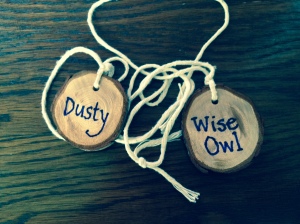From October 11 until February 22,2015 I am going to be part of a show of children’s book illustrators at the Bainbridge Island Museum of Art. The show is called Points of Entry. A few weeks ago Greg Robinson – the executive director and curator of the museum – came over to my studio to pick out work. He explained to me that the museum did not just want to have framed finished paintings up on the wall. He wanted kids (and adults) to have a way into those paintings.
A few weeks ago Greg Robinson – the executive director and curator of the museum – came over to my studio to pick out work. He explained to me that the museum did not just want to have framed finished paintings up on the wall. He wanted kids (and adults) to have a way into those paintings.
He plans to accomplish this by showing sketches and false steps, digressions and diversions as well as finished book illustrations. This approach just feels right to me. In my life I do a lot of things – I make food and share it with friends, I paint for the pleasure of painting, I paint to illustrate stories, I paint designs for fabric. All of these activities are connected and they spill into each other and feed each other. There are mistakes and false steps along the way. It is an unusual opportunity to show the whole interconnected process.  An example of Greg’s approach is how he plans to show Apple Cake, a book I wrote and illustrated in 2012.
An example of Greg’s approach is how he plans to show Apple Cake, a book I wrote and illustrated in 2012.  The original seed for this book was my Great Grandmother’s recipe for Apple Cake. The text of the book is mainly the simple instructions on how to bake the cake. (The story comes in the wild ways that those instructions are carried out.) Greg asked me to track down the original recipe card. I wasn’t even sure it existed because Lily Jane Powell didn’t use written recipes, but my mother had a card that her mother had transcribed, battered by time and pin pricks; that card will be part of the show.
The original seed for this book was my Great Grandmother’s recipe for Apple Cake. The text of the book is mainly the simple instructions on how to bake the cake. (The story comes in the wild ways that those instructions are carried out.) Greg asked me to track down the original recipe card. I wasn’t even sure it existed because Lily Jane Powell didn’t use written recipes, but my mother had a card that her mother had transcribed, battered by time and pin pricks; that card will be part of the show.  One of the paintings in the book shows Alfonso getting a bit of salt to put in the cake. (My grandmother didn’t use salt but I do.)
One of the paintings in the book shows Alfonso getting a bit of salt to put in the cake. (My grandmother didn’t use salt but I do.)  That painting of a whale inspired this quilt, which will also be included.
That painting of a whale inspired this quilt, which will also be included. So you can see the generous and open way that Greg and the museum are mounting the exhibition, and why they are calling it Points of Entry. This is all in keeping with the overall philosophy of the museum. The museum shows mainly artists from the northwest and it shows not only paintings and sculpture but also crafts and book arts. I will be in good company in this show: the other three illustrators are Woodleigh Marx Hubbard, Jennifer K. Mann and Nikki McClure.
So you can see the generous and open way that Greg and the museum are mounting the exhibition, and why they are calling it Points of Entry. This is all in keeping with the overall philosophy of the museum. The museum shows mainly artists from the northwest and it shows not only paintings and sculpture but also crafts and book arts. I will be in good company in this show: the other three illustrators are Woodleigh Marx Hubbard, Jennifer K. Mann and Nikki McClure.
I hope that if you are in the Seattle area you will take the ferry over to Bainbridge Island and visit the show. Admission to the museum is free, and you can walk from the ferry terminal. There will be an opening from 2-5 on Saturday, October 11th. Come dip your toes in!
















![Christian Krohg [Norwegian Realist Painter, 1852-1925]](https://booksaroundthetable.files.wordpress.com/2014/09/big-book-little-child.jpg?w=248&h=300)



